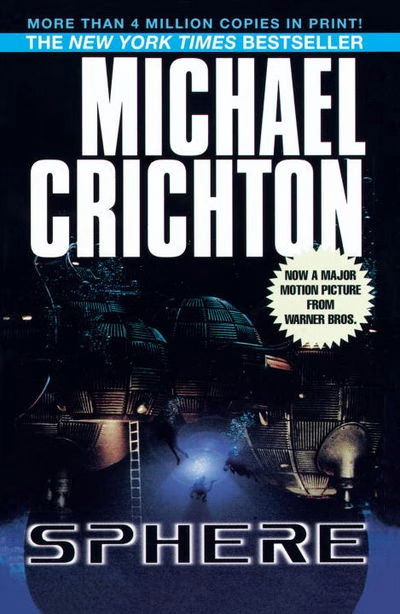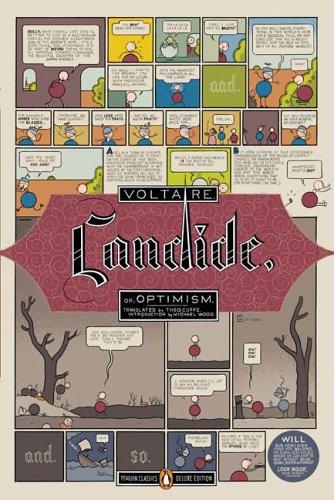Plot Summary
The Curse and a New Beginning
The story opens in 1123 with the public hanging of a young, red-haired Frenchman accused of stealing a chalice from a monastery. As he dies, his pregnant lover, a mysterious girl named Ellen with striking golden eyes, places a terrible curse upon the three men who condemned him: a knight, a priest, and a monk.
The narrative then jumps forward to 1135. Tom Builder, a master mason, travels with his family—his pregnant wife Agnes, his resentful son Alfred, and his young daughter Martha. Tom’s lifelong dream is to build a cathedral, a passion that has kept his family in a state of perpetual transience. Their fortunes take a turn for the worse when their current project, a house for the young nobleman William Hamleigh, is abruptly cancelled. William, enraged after being publicly rejected as a suitor by Lady Aliena, the daughter of Bartholomew, Earl of Shiring, dismisses Tom and his men.
Now destitute as winter approaches, Tom’s family wanders into the forest. Their only valuable possession, a pig, is stolen by a brutal outlaw with a mutilated mouth. Tragedy strikes when Agnes dies after giving birth to a son in the cold woods. Overwhelmed by grief and despair, Tom abandons the newborn baby on his wife’s grave. He is immediately consumed by guilt and turns back, only to find the baby gone.
In the forest, he encounters Ellen, the woman from the prologue, and her strange, intelligent son, Jack. Ellen, who lives as an outcast, comforts Tom and reveals that she saw a priest rescue the baby and take it to a nearby monastic cell. With nowhere else to go, Ellen and Jack join Tom’s family. They eventually arrive at the town of Kingsbridge, where the old cathedral has just been destroyed in a fire. The ambitious new prior, Philip, hires Tom to clear the rubble, giving him the first glimmer of hope that he might yet build his cathedral. Unbeknownst to all, the fire was secretly started by Ellen’s son, Jack, who understood that the disaster was Tom’s only chance for work.
The Rise and Fall of Fortunes
Prior Philip, a devout and politically astute monk, sees the fire as a divine opportunity to build a new, grander cathedral that will make Kingsbridge a center of power and worship. His ambition puts him in direct conflict with the conniving Bishop Waleran Bigod (the priest from the prologue) and his own resentful sub-prior, Remigius.
Meanwhile, political turmoil engulfs England as King Stephen’s claim to the throne is challenged by the Empress Maud. Philip learns that Earl Bartholomew, Aliena’s father, is secretly plotting with Maud’s half-brother to overthrow Stephen. To protect the Church from another devastating war, Philip discreetly leaks the information to Bishop Waleran. Waleran, seeking to destroy his rivals, passes the information to the Hamleighs, who despise Bartholomew for Aliena’s rejection of William.
Led by the sadistic William, the Hamleighs launch a brutal surprise attack on Earlscastle.
* They capture Earl Bartholomew, who is later imprisoned and executed for treason.
* In a horrifying act of vengeance, William publicly rapes Aliena.
* He also maims her younger brother, Richard, by slicing off part of his ear.
Left destitute and homeless, Aliena and Richard find refuge at the Kingsbridge Priory. Before he dies, their father makes them swear a sacred oath: Richard must reclaim the earldom, and Aliena must support him until he succeeds. To fulfill her vow, Aliena uses her intelligence and resilience to become a highly successful wool merchant, with Prior Philip acting as her crucial partner and protector. Her wealth funds Richard’s training as a knight and supports the initial construction of the new Kingsbridge Cathedral, with Tom Builder as master mason. Jack, apprenticed to Tom, reveals a prodigious, intuitive talent for stonework and design, quickly surpassing Tom’s own son, Alfred.
A City Burned, A Cathedral Collapsed
As Kingsbridge grows into a prosperous town thanks to its wool market and the cathedral project, it becomes a direct threat to the power of William Hamleigh, now the Sheriff of Shiring, and Bishop Waleran. During the bustling annual fleece fair, William leads a vicious raid on Kingsbridge, burning the town and slaughtering its citizens.
* Aliena’s entire stock of wool is destroyed, ruining her financially.
* Tom Builder is killed in the melee, struck down by William’s horse.
* Prior Philip is left with a devastated town and a half-built cathedral.
Following Tom’s death, his son Alfred becomes the master builder. Aliena, desperate to continue funding her brother’s quest for knighthood, agrees to marry Alfred, who is prosperous but whom she despises. Their marriage is a disaster; Alfred proves to be impotent, and the union is never consummated. Meanwhile, Jack and Aliena, who have developed a deep bond, realize they are in love. On the morning of her wedding to Alfred, Aliena and Jack make love, and she conceives a child.
Alfred, jealous of Jack’s superior talent, deviates from his father’s sound designs for the cathedral. He rushes to complete a stone vault over the chancel, a feature the supporting walls were not designed to carry. During the Whitsunday service, the roof collapses, killing seventy-nine people. Amid the rubble and chaos, Aliena gives birth to Jack’s son, a red-haired boy she names Tommy. When Alfred sees the baby’s red hair, he knows it is not his and casts Aliena out.
Exile and Return
Blamed for the collapse, Jack leaves Kingsbridge. He embarks on a journey across France and Spain, ostensibly a pilgrimage to Santiago de Compostela, but his true purpose is to study the revolutionary new architectural styles emerging on the continent. He absorbs the principles of the pointed arch and the ribbed vault, forming a vision for a cathedral far grander and more graceful than anything seen before in England.
Destitute once more, Aliena takes her baby and sets out to find Jack. Her arduous search lasts for over a year, following faint traces of a red-haired English mason across Europe. She finally finds him in Paris. They return to Kingsbridge together, their love reignited. Prior Philip, whose project is stalled, recognizes Jack’s genius and new knowledge. He makes Jack the new master builder, but on one condition: Jack and Aliena cannot live together as man and wife until her marriage to Alfred is officially annulled. They reluctantly agree, beginning a long and painful period of forced separation. At the same time, Aliena’s brother Richard returns and becomes the charismatic leader of an army of outlaws, waging a guerilla war against William Hamleigh.
Oaths Fulfilled, Secrets Revealed
Years pass. Jack’s revolutionary design for the cathedral begins to take shape, and Kingsbridge once again thrives. Aliena rebuilds her wool business and has a second child with Jack, a daughter named Sally. Their annulment, however, is repeatedly blocked by the machinations of Bishop Waleran. The stalemate is broken when Alfred, impoverished and bitter, returns to Kingsbridge and attacks Aliena. Richard intervenes and kills Alfred in the ensuing fight. Finally free, Aliena and Jack are married.
The civil war between Stephen and Maud eventually ends. Duke Henry, Maud’s son, becomes King Henry II. As part of the peace settlement, all lands are returned to the families who held them before the war. Richard finally becomes the rightful Earl of Shiring, and Aliena’s long-held oath is fulfilled. William Hamleigh is reduced to a minor lordship.
The narrative reaches its climax years later. Jonathan, the baby Tom Builder abandoned and the monks raised, is now the sub-prior. The disgraced Bishop Waleran, seeking a final revenge, publicly accuses Prior Philip of breaking his vow of celibacy, claiming Jonathan is Philip’s son. The accusation threatens to destroy Philip. At the ecclesiastical trial, Jack and Ellen reveal the truth: Jonathan is Tom Builder’s son. In her testimony, Ellen finally exposes the full story of the conspiracy that led to the hanging of Jack’s father decades earlier. She reveals that Waleran, William’s father Percy Hamleigh, and the former Prior James framed an innocent man to cover up a political assassination. The revelation destroys Waleran’s career, and he ends his days as a penitent, broken monk in the very priory he tried to ruin.
The novel concludes with the triumphant consecration of the completed Kingsbridge Cathedral, a testament to decades of struggle, faith, and creativity.
Characters
Prior Philip
A small, intelligent, and fiercely devout monk who becomes the prior of Kingsbridge. Philip’s primary motivation is the glorification of God, which he seeks to achieve by transforming the rundown priory into a powerful and prosperous center for worship and learning. He is a master strategist and a shrewd politician, forced to navigate the corrupt and violent world of secular lords and ambitious churchmen. Though he can be rigid and demanding, his ambition is tempered by a deep-seated compassion for the common people under his care. His journey is a constant struggle to build a sanctuary of peace and faith in a world dominated by greed and violence.
Jack Jackson (Shareburg)
The son of an outlawed jongleur and the mysterious Ellen, Jack is raised outside the bounds of society in the forest. He is a gifted artist and a natural genius in architecture, possessing an intuitive understanding of structure and form that surpasses traditional learning. His motivation is twofold: his all-consuming love for Aliena and his innate passion for building, which culminates in his vision for Kingsbridge Cathedral. Jack represents innovation, creativity, and a form of natural wisdom that often clashes with the rigid conventions of the Church and the feudal order. His character arc is a journey of self-discovery, from a strange, silent boy to a master builder who revolutionizes English architecture.
Aliena
The daughter of the Earl of Shiring, Aliena begins the story as a proud, beautiful, and privileged noblewoman. After her family is destroyed by the Hamleighs and she suffers a brutal rape, her life becomes defined by an oath sworn to her dying father: to help her brother, Richard, reclaim the earldom. This vow forces her to suppress her own desires, including her love for Jack. Aliena is exceptionally resilient, intelligent, and courageous. She transforms herself from a destitute victim into one of the wealthiest wool merchants in England, demonstrating a shrewd business acumen that defies the expectations for women of her time. Her life is a testament to survival and the enduring power of love and loyalty in the face of unimaginable hardship.
William Hamleigh
The novel’s primary antagonist, William is a brutal and sadistic nobleman driven by greed, lust, and a deep-seated inferiority complex, constantly stoked by his manipulative mother, Regan. He is a force of pure destruction, his actions standing in stark opposition to the creative and community-building efforts of Philip and Jack. His motivations are simple and base: he wants power, wealth, and to inflict suffering on those who have slighted him, particularly Aliena. Lacking intelligence or vision, his only tools are violence and intimidation, and his arc is one of steady moral decay, culminating in a pathetic and ignominious end.
Waleran Bigod
A clever, cold, and relentlessly ambitious priest who rises to become Bishop of Kingsbridge. Waleran is Philip’s chief rival within the Church. While Philip seeks to build Kingsbridge for the glory of God, Waleran seeks power for its own sake. He is a master of political intrigue and legal manipulation, representing the corruption and worldliness that plagues the medieval Church. He is a hypocrite who uses religious law as a weapon to destroy his enemies and advance his own career, serving as the intellectual and spiritual antagonist to Philip’s genuine faith.
Tom Builder
A skilled and principled master mason whose dream is to build a cathedral. Tom is a kind, practical, and hardworking man who represents the dignity and ambition of the medieval craftsman. While he is a visionary in his trade, he is also a flawed man, driven to abandon his own child in a moment of profound despair. He acts as a mentor to Jack, passing on his knowledge and his dream. His life is defined by the struggle to create something beautiful and lasting in a chaotic and often cruel world.
Ellen
A mysterious and wise woman who has been cast out of society and lives in the forest with her son, Jack. She represents a form of pre-Christian, natural wisdom and is fiercely independent, living by her own rules. She is bound by a deep love for Jack’s father, who was unjustly executed, and a powerful sense of justice. She places a curse on the men responsible, a curse that echoes through the novel as a foreshadowing of their eventual downfall. She is both a nurturing mother and a formidable enemy, embodying a freedom and power that exists outside the novel’s rigid social and religious structures.
Core Themes
Creation vs. Destruction
This is the central conflict of the novel. The decades-long construction of Kingsbridge Cathedral is the ultimate act of creation, requiring faith, community, immense labor, and artistic genius. This creative impulse is constantly under threat from forces of destruction: the brutal, senseless violence of William Hamleigh, the political scheming of Waleran Bigod, the chaos of civil war, and the random cruelty of fate. The narrative shows that while destruction is swift and easy, the act of creating something beautiful and enduring is a difficult, multi-generational struggle that ultimately gives life meaning.
The Sacred and the Profane
The Pillars of the Earth explores the complex nature of faith in the medieval world. It contrasts the pure, constructive faith of Prior Philip, who seeks to glorify God through good works and the creation of beauty, with the corrupt, power-hungry hypocrisy of Bishop Waleran, who uses his office for personal gain. The cathedral itself becomes a sacred space, but it is built through profane means: political maneuvering, economic exploitation, and bloody conflict. The novel suggests that true holiness is found not in rigid dogma, but in compassionate action and the human drive to create.
The Struggle for Power and Justice
Set against the historical backdrop of “The Anarchy”—the English civil war between King Stephen and Empress Maud—the story is a microcosm of a lawless age. The grand struggle for the crown is mirrored in the smaller-scale conflicts: Philip versus Waleran for control of the diocese, Kingsbridge versus Shiring for economic dominance, and the Shiring family versus the Hamleighs for the earldom. In a world where legal and moral authority has collapsed, justice is not a given; it must be fought for, often outside the established systems of power. The novel’s resolution, where characters like Aliena and Philip ultimately triumph, suggests a deep-seated desire for a just and orderly world.
The Changing Social Order
The novel depicts a society in transition. While the old feudal order of knights and earls still holds immense power (often destructive, as with William), a new class of merchants and master craftsmen is rising through skill, intelligence, and commerce. Aliena, as a female wool merchant, and Jack, as a builder whose genius makes him indispensable, achieve a level of influence and independence that challenges the traditional hierarchy based solely on birthright and military might. The growth of Kingsbridge from a sleepy village into a thriving commercial town symbolizes this shift toward a new, more dynamic social and economic structure.
Plot devices
The Cathedral as Central Symbol
The cathedral is more than just a building; it is the novel’s central organizing principle and most powerful symbol. Its construction provides the narrative’s spine, with each stage of the building process marking a new phase in the lives of the characters and the community. The cathedral represents hope, human aspiration, the quest for permanence in a chaotic world, and the collective effort of a community. Its architectural style—evolving from the dark, heavy Romanesque to the light-filled, soaring Gothic—mirrors the novel’s thematic movement from oppression and despair toward enlightenment and triumph.
The Curse of the Hanged Man
The curse Ellen places on the three men responsible for her lover’s execution in the prologue serves as a powerful framing device. It establishes the novel’s long-term moral arc, promising that the injustices committed at the beginning of the story will eventually be answered. Throughout the decades-long narrative, the reader witnesses the downfall of each of the cursed men—Percy Hamleigh, Prior James, and finally Bishop Waleran—fulfilling the prophecy and reinforcing the theme that justice, though slow, is inescapable.
The Anarchy
The historical setting of the English civil war between King Stephen and Empress Maud is a crucial plot device. This period of widespread lawlessness and political instability provides the backdrop of constant threat and opportunity that drives the narrative. The war directly impacts the characters’ fortunes, allowing for the downfall of the old Earl of Shiring, the rise of the Hamleighs, Richard’s career as a knight, and the general precariousness of life and commerce. The chaos of the war makes the creation of the cathedral—an island of order and permanence—all the more heroic and significant.
Hidden Parentage
The novel employs the classic device of secret and mistaken parentage to drive key plot points and resolve major conflicts. The mystery of Jack’s father’s identity fuels his journey of self-discovery and ultimately leads to the final unmasking of Waleran Bigod’s foundational crime. Similarly, the secret of Jonathan’s birth (the baby abandoned by Tom Builder) is used by Waleran as a weapon against Philip, and its eventual revelation serves to prove Philip’s innocence while simultaneously highlighting the novel’s themes of forgiveness and unconventional family bonds.





